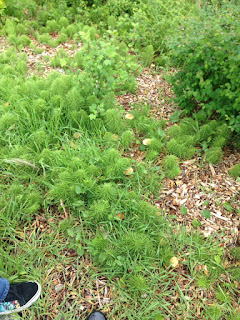Carkeek Park


I saw this Sea Star in the Low Tide zone. It was clinging to a rock as the tide was coming back in and it was experiencing wave action. Sea Stars play a big role in intertidal zones because they are keystone species. They are a big help with population control because they are technically predators. The most interesting thing I saw on this trip is the second picture I have included, which was a dungeness crab we found with a sea anemone living on it! I have never seen anything like it before, and I have never seen a live dungeness crab up in the intertidal zone like that before. We also spotted porpoises swimming by which I had never seen before either. What I saw on this field trip furthered my awe in the diversity of life we have here in the Puget Sound. My question would be what is the effect of the large populations of humans on that beach in the summer? What percentage of marine life deaths occur because of humans being reckless on these beaches? (i.e. not looking where they're walking, leaving trash, relocating organisms, taking organisms out of tide pools).


What a great photo of the 🦀 crab! I am sure humans impact marine life on the beach but it is difficult to quantify the extent of our impact.
ReplyDeleteThat sea star is to pretty! for a moment I thought they second pic was a giant pacific chiton, and I was like "OMG NO WAY", I love those things but I rarely ever see one. I had a similar question, except about children, like I know they're not to blame for alot of the pollution but just curious as to how many those little fingers kill.
ReplyDelete